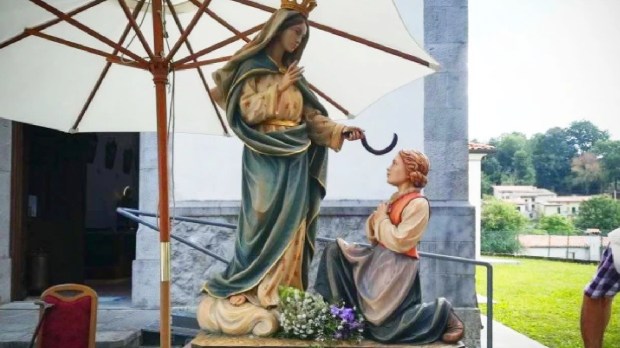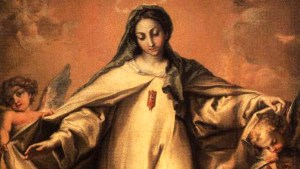Lenten Campaign 2025
This content is free of charge, as are all our articles.
Support us with a donation that is tax-deductible and enable us to continue to reach millions of readers.
This story of faith comes to us from Porzus, a small town in northern Italy, almost bordering Slovenia. The protagonist is a well-behaved little girl named Teresa Dush.
Teresa was born on September 11, 1845, in Porzus, and was baptized on the same day. Her parents, Giuseppe Dush and Caterina Grimaz, had been married for 18 years before the child arrived, so they considered her a great gift from God.
They were a very poor family and lived on a steep and rocky land where the harvest was scarce and the landscape was only meadows and pastures.
Although Teresa had very fragile health, she never complained about the fatigue caused by the work she had to do with her parents. At the age of 9, she began to take catechism lessons with the pastor of her church, and was always attentive to what he taught.
An event that changed the whole town
On September 8, 1855, the feast of the Nativity of the Virgin Mary (a holy day of obligation at the time), three days short of Teresa’s 10th birthday, an extraordinary event took place that would forever mark the entire city of Porzus.
Caterina, the girl’s mother, had completely forgotten about that holy day of obligation, which in that year fell on Saturday. The complication was that the next day was Sunday, and both were days on which, by Church teaching, they should abstain from labor – but they had not collected enough hay to feed the animals.
Obviously they could not leave the poor animals without food for two days, so Caterina called Teresa and told her to go and cut some hay in the meadow.
The girl timidly reminded her mother that she had learned in catechism that Catholics should not work on holy days. Her mother understood, but replied, “If we eat, the animals must also eat.”
Full of doubts, the girl obeyed her mother and went to the meadow, asking for guidance from the Virgin Mary whom she loved so much. As soon as she raised the sickle to cut the hay, she felt someone take it out of her hand.
She looked up and saw a beautiful Lady, who with a sweet voice said to her:
“You shouldn’t work on this holy day! Here, this will do,” cutting some hay and handing it to the girl.
Then she added, “Tell everyone to sanctify the name of the Lord and not to blaspheme, because in doing so they offend my Son and wound my maternal Heart. Moreover, I want days of fasting and vigils to be observed.”
Quickly the news spread throughout the city. She answered the villagers who did not believe what she said: “Tell Our Lady to give you another sign.”
The “other sign” was not long in coming
The following Sunday, while Teresa was in church, the Virgin Mary appeared to her again. She was next to the altar wearing a dress covered with roses, and she called to the girl.
The girl fearfully approached her. All her friends and everyone who was in the church saw the girl participate in a long conversation, but didn’t see anything else.
She left the church in ecstasy and later said that the Virgin had accompanied her home, and that before leaving, she left her a gift. This gift was the sign that the villagers had asked for: the mark of a cross shining like gold, about 2 inches long, imprinted on the back of the girl’s left hand.
This sign could be seen by everyone, and no matter how hard they tried to clean the cross off Teresa’s hand, it would not go away; in fact, it became even brighter.
The Virgin Mary later continued to give private revelations to Teresa, who eventually became a religious, living a life of devotion, humility, and obedience.
Her health had always been precarious, but eventually she was diagnosed with pulmonary tuberculosis. During the “Calvary” of her illness, the cross on her hand became red, and when she died (she was not yet 25 years old), it became white.
The sanctuary dedicated to Our Lady of Health
After the first apparition, the people began to observe an unusual phenomenon at the site of the vision: The meadow was always in bloom, and in the winter when it snowed, it melted at that spot before anywhere else. They started gathering there every Sunday to pray the Holy Rosary.
In 1885 they decided to build a small chapel, and in 1886 they put up a picture depicting the scene of the apparition, with a message written on the top: “Keep the feast days holy. Do not blaspheme, and observe fasts and vigils.”



